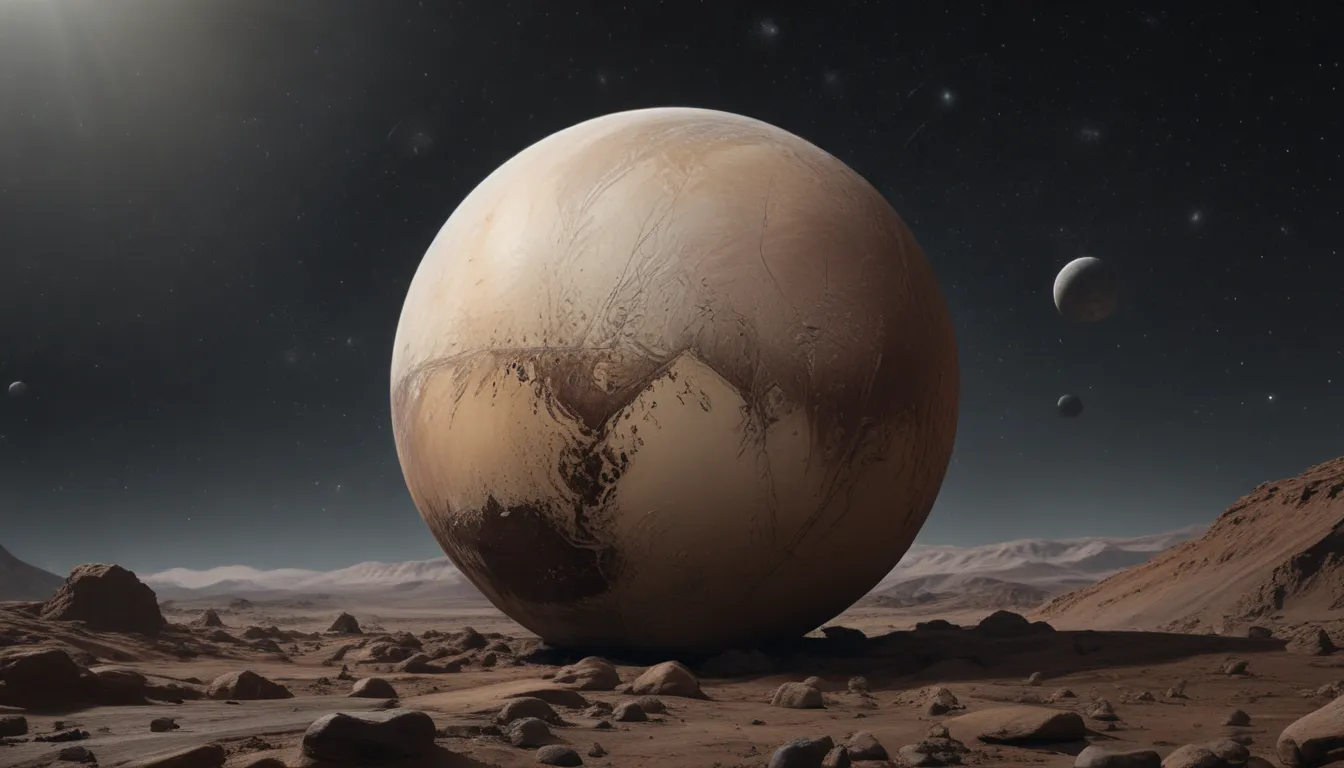The pictures we use in our articles might not show exactly what the words say. We choose these pictures to make you interested in reading more. The pictures work together with the words but don’t take their place. The words still tell you the important facts.
Pluto, once considered the ninth planet in our solar system, has captivated astronomers and space enthusiasts alike for decades. From its discovery in 1930 to its reclassification as a dwarf planet in 2006, Pluto has remained a subject of fascination and debate. Join us as we delve into the world of Pluto with these intriguing facts.
Unveiling Pluto: A Brief History
Clyde Tombaugh, a young astronomer, discovered Pluto in 1930 at Lowell Observatory in Flagstaff, Arizona. This icy world, which orbits beyond Neptune in the distant Kuiper Belt, quickly became the ninth planet in our solar system. Named after the Roman god of the underworld, Pluto holds a unique place in astronomical history.
Uncovering Pluto’s Mysteries
Physical Characteristics
- Pluto has a width of approximately 1,400 miles and a radius of 715 miles, making it smaller than Earth's moon.
- Composed of 30-50% ice and 50-70% rock, Pluto is as old as the solar system itself, at 4.6 billion years.
- Unlike the other planets, Pluto's orbit is tilted and elliptical, with an average distance from the sun of 3.7 billion miles.
- With a day on Pluto lasting 153 Earth hours and a year equivalent to 248 Earth years, time on this distant planet moves at a different pace.
Unique Features
- Pluto's surface is a blend of craters, mountains, valleys, and plains, with temperatures plummeting as low as -400°F.
- The dwarf planet boasts intriguing geological formations, including towering ice mountains, extensive valleys, and a heart-shaped glacier known as Tombaugh Regio.
- Despite its small size, Pluto has a complex atmosphere that expands and contracts with its distance from the sun, showcasing dynamic changes over time.
- Pluto's distinctive reddish hue comes from tholins, organic molecules that create a colorful mosaic across its surface.
Astronomical Relationships
- Pluto is orbited by five moons, with Charon being the largest and sharing a unique tidally locked orbit with the dwarf planet.
- In a binary system with Charon, Pluto's rotation on its side gives rise to dramatic seasonal variations and retrograde motion.
- New Horizons, a groundbreaking spacecraft, provided unprecedented insights into Pluto's composition and environment after a nine-year journey to this distant world.
The Debate Over Pluto’s Status
In 2006, amid ongoing scientific discussions, Pluto was reclassified as a dwarf planet, sparking widespread debate and public outcry. While some argue for its reinstatement as a planet based on various criteria, others maintain that Pluto's unique characteristics set it apart from traditional planets.
Journeying Into the Unknown
As we unravel the mysteries of Pluto and its enigmatic moons, we gain a deeper understanding of the complexities of our solar system. From the icy expanse of the Kuiper Belt to the distant reaches of the cosmos, Pluto stands as a symbol of exploration and discovery in the vast universe around us.
Embrace the Wonder of Pluto
As we gaze at the distant twinkling lights of Pluto in the night sky, let us remember the curiosity and awe that drive us to explore the unknown. Whether it's a planet, a dwarf planet, or a celestial marvel, Pluto continues to fascinate and inspire us to reach for the stars and uncover the secrets of the universe. Join us on this cosmic journey as we delve into the realms of Pluto and beyond, igniting our passion for discovery and knowledge in the vast expanse of space.






